Steps to Efficient and Effective Math Blog Posts
Today was the 10th day of class for my Grade 9 Applied students and we’re starting to get into a bit of a flow with our iPad iOS Productivity. Rather than having to take the time to model every step on the iPad for a particular task, more students are becoming very comfortable with the multi-tasking or “App Smashing” that we do on a daily basis. Although we have only managed to get a few math blog posts up, students are becoming more comfortable with the process of taking a task and posting to their individual student blogs. Blogging can be really useful for students which is why they should be encouraged to view these blogging resources. With time, the quality of the student’s blogs will certainly improve well above the current standard. We still have a way to go before the quality of the student blog posts are at the standard I had envisioned when the idea of student blogs in math first came about, but I’m happy that their iPad workflow ability seems to be improving.
How Do You Blog Efficiently and Effectively in Math?
I’ve had quite a few people ask me about what blogging in math class looks like. I recently created a quick student blog setup guide for the Blogger platform, but never quite modelled what I wanted to see my students posting. So let’s get to it!
1. Students Take Screenshots or Photos of a Completed Math Task
To keep things simple, students are completing math tasks in the GoodNotes iPad Annotation App and then taking a screenshot of their work by simultaneously tapping the Home + Power buttons on the iPad. This step could be easily modified to include tasks completed on lined paper by simply taking a photo of the task with the iPad.
2. Crop Your Math Task Image
Although this step is not necessary, it is always a best practice to have the math task cropped to eliminate any unwanted details such as portions of a different math task, toolbars from an iPad app or other distractions. You can do this in the iPad Photos app.
3. Create a New Post
Students should tap on the blogging app of their choice. Since my students are using Blogger this year, they would login to the Blogger app with their Google Apps for Education account and create a new post. For the first few weeks, I have been providing students with the Post Title such as:
Sec. 1.3 – Area of Composite Figures
and Labels such as:
Unit 1, Sec. 1.3, Area, Composite Figures, Level ___
Note that the Level ____ label is a self-assessment where the student has the opportunity to essentially tag their post with how they feel about the topic. In Ontario, we use Levels 1 (weak) to 4 (strong).
4. Insert Math Task Image and Communicate Understanding
Students can then tap on the Post Content area of the iPad screen to insert the screenshot of their math task and then provide a description of the work they have completed.
Edit: October 12th, 2013
Please keep in mind that this is only the beginning. A student blog can be used as a place for posting work for the world, but consider the great things we can do once students build confidence and can begin providing descriptive feedback for their peers. Learn more about how I want this project to evolve here: Redefining Digital Learning in Mathematics.
Get Your Kids Blogging and Join the Mathlete Blogs Network
Blogging in Math Class is a great alternative to math journaling and what better way to give students an opportunity to share their understanding with the world. If you’re interested in getting your kids blogging through Blogger, WordPress, KidBlogs or any other option, we’d love to get them connected with others through my new Math Student Blogging Community. Whether your students will be blogging once a week or once a month, we’re hoping to get kids commenting and providing feedback for each other.
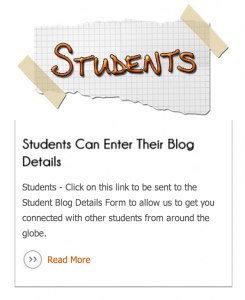 With the Mathlete Blogs website just a week old, we have classes from Ontario and Dominican Republic active, with many other teachers expressing interest to join.
With the Mathlete Blogs website just a week old, we have classes from Ontario and Dominican Republic active, with many other teachers expressing interest to join.
Have your students submit their blog details and I’ll get them imported into the database within a day in most cases.
Good luck as you get started and feel free to leave a comment if you need a hand!
WANT TO LEARN HOW TO TEACH THROUGH TASK?

Share With Your Learning Community:

About Kyle Pearce
I’m Kyle Pearce and I am a former high school math teacher. I’m now the K-12 Mathematics Consultant with the Greater Essex County District School Board, where I uncover creative ways to spark curiosity and fuel sense making in mathematics. Read more.
Read More From The Blog


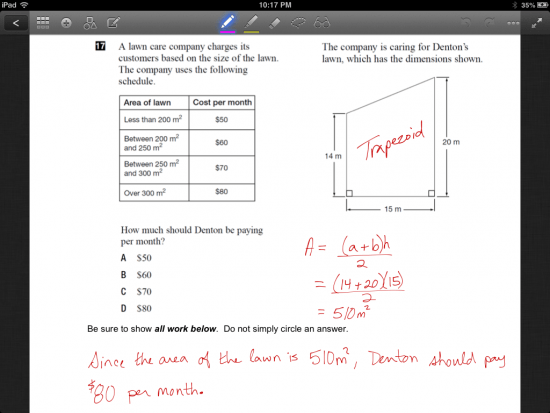
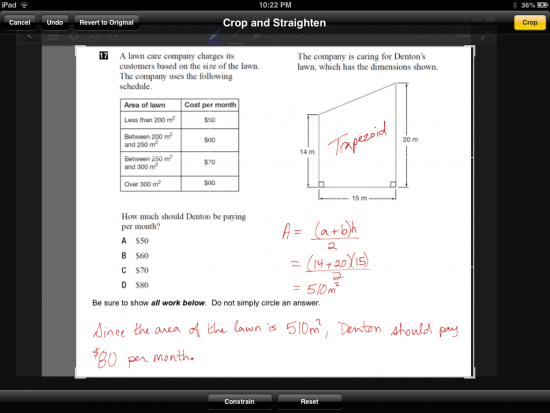
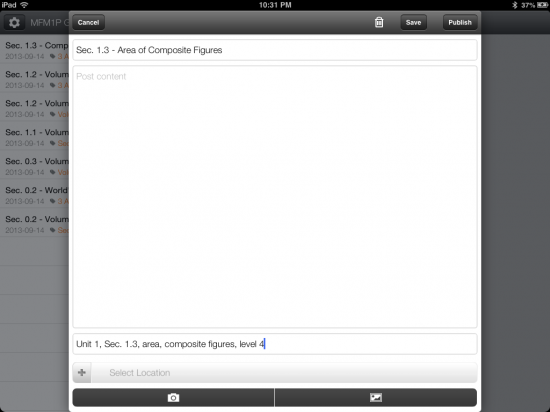
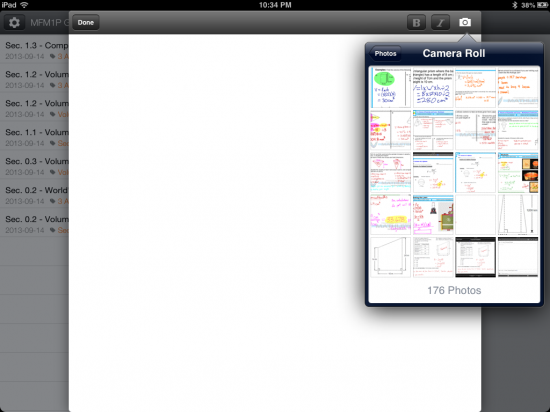
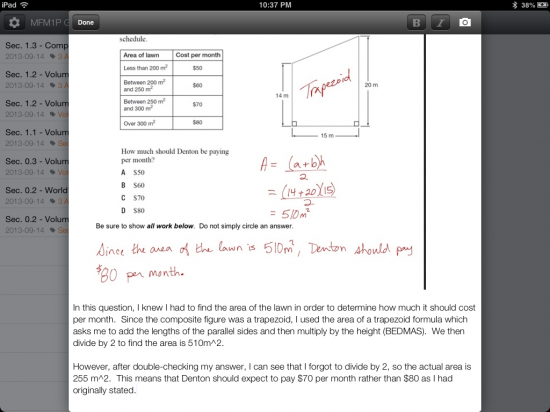
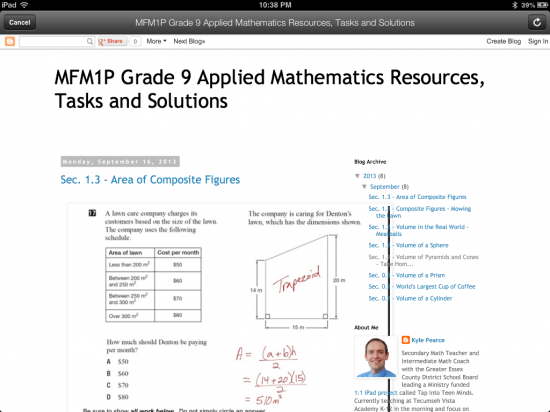
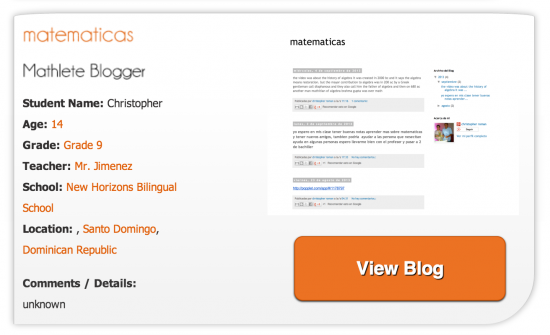
I’m curious how you are having your students use the full potential of the blog. Can you tell me more?
I’m curious too. It seems like you’re using the blog for students to submit their work to you. Are you using the comment areas to facilitate dialogue between you and the students or, better yet, between students?
Interesting use of screenshots! 🙂
Hi Scott and Julie:
Thanks for the comments!
You’re absolutely right that at this point, we are not utilizing the full capabilities. To give some background, I am teaching one 75-minute period in the morning with a group of students that have struggled with math in elementary school. Work habits, attitudes towards math, and conceptual understanding are commonly lacking.
Here is how far they’ve come after one month of school:
The introduction of the iPad as their main tool in math class was a huge leap considering that many of these students have a difficult time with organizing paper resources, handwriting legibly, etc. so I’m quite happy with where we are at currently.
On the flip side, I’m hoping to begin introducing screencasting apps like Explain Everything and Doceri so students can post videos to their blog shortly.
Our goal will be to have students commenting on each other’s blogs, but we just aren’t there yet.
Right now, the blog is being organized in such a way that students can demonstrate understanding of learning goals and quickly find their work through the use of labels/comments.
So, in summary: students are not utilizing the full potential of the blog… yet!
I think educators should be very careful how quickly we toss out comments that may be taken as questioning the effectiveness of the hard work being undertaken “isn’t good enough.” I’m sure that’s not what either of you meant, but my immediate thought was “they think this is a waste of time/resources.” Comments that can be taken out of context are part of the reason more teachers won’t take a chance to try something new. I’m confident that wasn’t the intent of either comment, but I will be honest to say I felt a little defeated immediately after reading both when I reflect on the long road this past month has been to try and inspire a group to do great things with the great tool we have for only 75 minutes a day.
See this post Redefining Digital Learning in Mathematics to get a better idea of where this idea is heading (assuming all goes well!).
Cheers!
Kyle,
I would agree with Scott. Remember to try to assume positive intent! I was merely curious if the students were providing comments to one another because it just seemed like the next logical step. My question was only to try to get to understand your thinking. By the way, I sent your blog post to a math teacher that I am working with. He has dabbled with students blogging but has run into a few roadblocks. My intent is to follow-up with him to ask him what he thinks about the steps that you showed and visit with him about the comment component. Thanks again for sharing and keep up the good work!
Kyle,
Sorry if you read our comments as critical. No need to be defensive or defeatist! We actually think this is really neat. We just didn’t see you mention next steps, as you say, so we thought we’d ask to see what you were thinking and planning! Like you, I think, we lean toward enablement of student voice and agency but we totally understand long-term evolution toward more sophisticated work. Sounds like even more awesome stuff lies ahead for your students!
Thanks for sharing additional details!
Hi Scott:
No harm done as mentioned! Bad timing I suppose as I’ve had a number of people challenging the effectiveness of math blogs this past week. As mentioned, we are far from where we want to go with this as it is a completely new concept in my area anyway. Hoping to continue making strides in the right direction.
Thanks for the support and questions as it is likely that I should have been more clear in the original post.
Have a great weekend!
Dear Kyle, its an absolutely fine job done by you, incorporating technology in teaching mathematics will prove beneficial to the students and it will also guide them well on the topics and make them learn the subject conceptually. It becomes very convenient to communicate with students with the help of technology and guide them exactly what is required. Thanks to your efforts, please share your insights regularly, all the best!
Wow , i learned something new here. i wish you will post more article just like this one
Visit abacustrainer.com!
Thanks for sharing.
Visit abacustrainer.com!
Thanks for sharing this knowledgeable post.